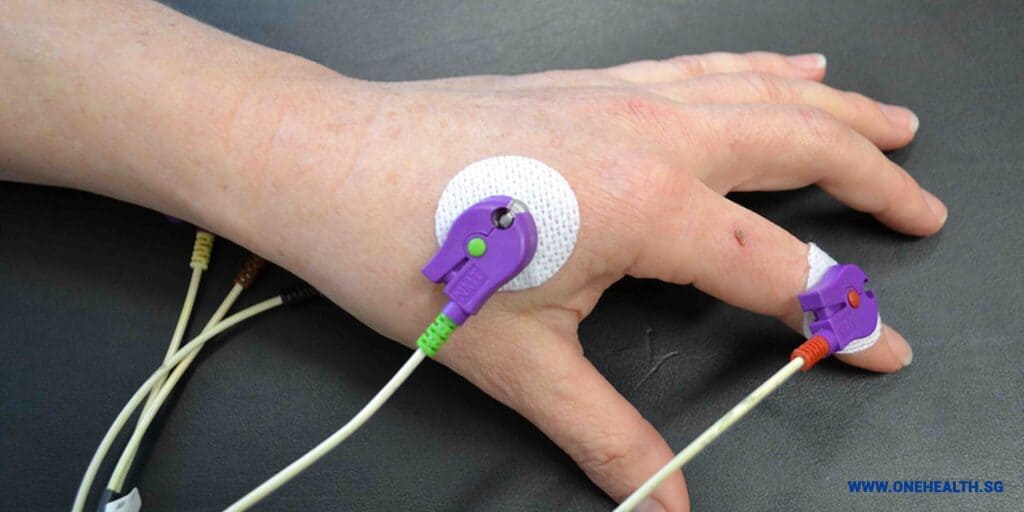In the realm of medical diagnostics and research, electromyography (EMG) stands as a fascinating tool that unveils the intricate workings of our muscles. By capturing the electrical activity produced by muscle contractions, EMG enables healthcare professionals to assess muscle function, diagnose neuromuscular disorders, and develop effective treatment strategies. In this article, we will delve into the world of electromyography, exploring its principles, applications, and potential benefits for patients.
Understanding Electromyography
Electromyography, a blend of electrical engineering and medicine, is a technique used to record and evaluate the electrical signals generated by muscle cells during contraction and relaxation. These signals, known as electromyograms, provide valuable insights into the health and functionality of our muscles.
The Basics of EMG
EMG involves the placement of small electrodes on the surface of the skin or directly into the muscle tissue. These electrodes detect the electrical impulses generated by muscle fibers, which are then amplified and recorded by specialized equipment. The resulting electromyogram showcases the electrical activity and characteristics of the muscle being examined.
Surface EMG vs. Intramuscular EMG
There are two primary types of EMG: surface EMG and intramuscular EMG.
- Surface EMG involves the placement of electrodes on the skin overlying the muscles of interest, providing a non-invasive assessment of overall muscle activity.
- Intramuscular EMG, on the other hand, involves the insertion of fine needle electrodes directly into the muscle tissue, enabling a more precise evaluation of specific muscles or muscle fibres.
Applications of Electromyography
EMG has found applications in various fields, contributing to diagnostics, research, and therapeutic interventions. Let’s explore some key areas where electromyography plays a crucial role:
Clinical Diagnosis and Assessment
In clinical settings, EMG aids in the diagnosis and evaluation of neuromuscular disorders such as muscular dystrophy, amyotrophic lateral sclerosis (ALS), and peripheral nerve injuries. By analysing the patterns of electrical activity, EMG helps healthcare professionals identify abnormalities, determine the severity of muscle dysfunction, and monitor disease progression over time.

Rehabilitation and Physical Therapy
EMG serves as an invaluable tool in rehabilitation and physical therapy programmes. By measuring muscle activation and assessing muscle imbalances, EMG helps therapists develop personalised treatment plans to restore muscle function and improve mobility in patients recovering from injuries or undergoing post-operative rehabilitation.
Sports Performance and Biomechanics
In the realm of sports science, EMG enables researchers and trainers to analyse muscle recruitment patterns, identify muscle imbalances, and optimise training techniques. By studying the electrical signals produced during specific athletic movements, EMG provides insights into muscle activation, helping athletes improve their performance and reduce the risk of injuries.
Advantages and Limitations of Electromyography
While electromyography offers remarkable benefits, it is important to recognise its advantages and limitations.
Advantages
- Non-invasive assessment: Surface EMG provides a non-invasive means of evaluating muscle activity, making it suitable for a wide range of patients.
- Objective measurement: EMG offers an objective measurement of muscle function, allowing for accurate assessment and tracking of progress.
- Real-time feedback: EMG can provide real-time feedback during physical therapy or training sessions, helping individuals optimise their muscle activation and movement patterns.
Limitations
- Discomfort: Inserting fine needle electrodes for intramuscular EMG may cause discomfort or pain.
- Interpretation challenges: Interpreting electromyograms requires expertise and experience to accurately identify normal and abnormal patterns.
- Contextual understanding: EMG findings must be considered in conjunction with other clinical information to derive meaningful conclusions.
Future Directions and Innovations
The field of electromyography continues to evolve, with ongoing research and technological advancements shaping its future. Here are some promising areas of development:
- Wearable EMG Devices: Advances in sensor technology have led to the development of wearable EMG devices that can provide real-time muscle activity monitoring outside the clinical setting. These portable devices have the potential to revolutionise sports training, assist in home-based rehabilitation, and aid in the management of chronic neuromuscular conditions.
- EMG-Driven Prosthetics: EMG is playing a pivotal role in the development of prosthetic limbs controlled by muscle signals. By using EMG data to decode muscle intention, researchers aim to create more intuitive and functional prosthetic devices that restore natural movement and enhance the quality of life for individuals with limb loss.
Electromyography has emerged as a remarkable tool, unravelling the complexities of muscular function and enabling advancements in diagnostics, research, and therapeutic interventions. By harnessing the power of electrical signals within our muscles, EMG empowers healthcare professionals, researchers, and patients alike. As technology continues to progress, the future holds exciting possibilities for the further integration of electromyography into various aspects of healthcare, ultimately improving the lives of individuals with neuromuscular conditions.
#Electromyography #EMG #MuscleFunction #NeuromuscularDisorders #Rehabilitation #SportsScience #Prosthetics #MuscleActivityMonitoring

